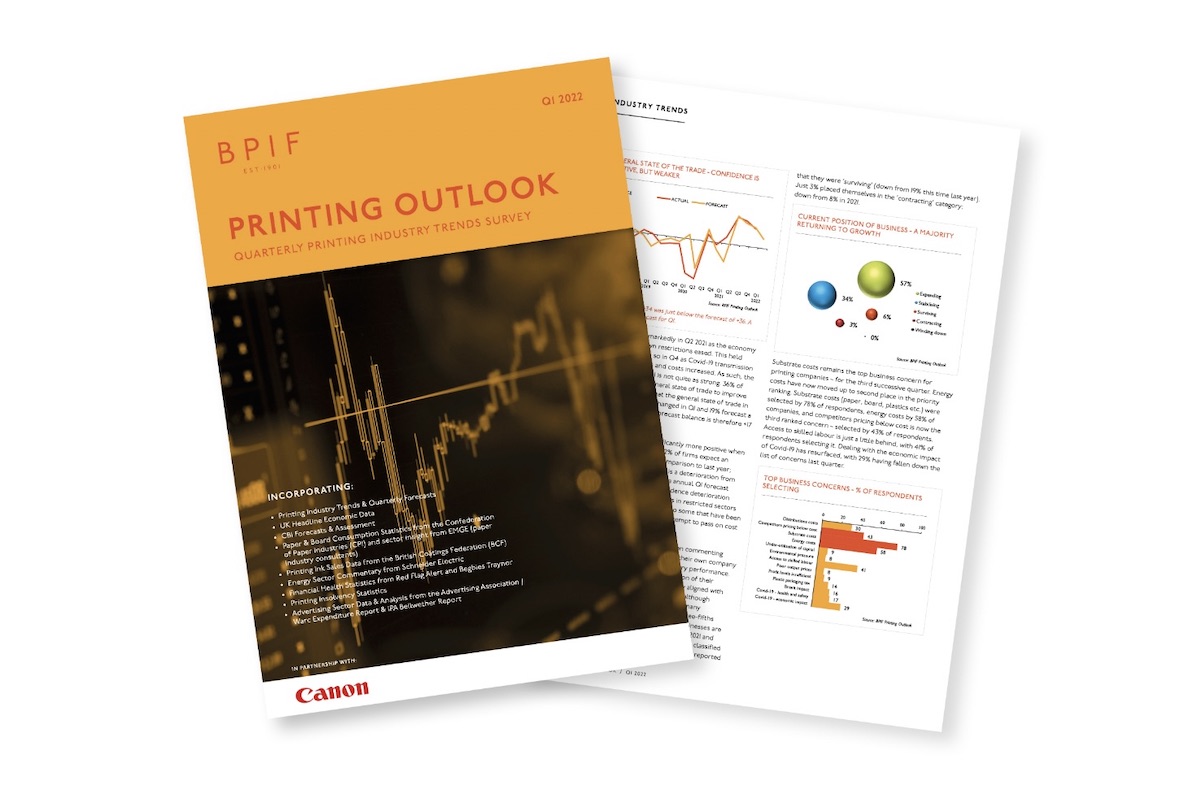Stronger than expected growth in orders and output helped the UK printing and printed packaging industry's continued recovery in Q3, but the forecast for Q4 is downbeat as confidence expectations continue to slide according to the latest ‘Printing Outlook’ from the BPIF.
The survey showed frequent cost increases, shocks over the cost of new energy supply contracts and heightened uncertainty due to political and economic turmoil in the UK has damaged confidence ahead of a normally bullishly anticipated Q4 period.
43% of printers managed to increase their output levels in the third quarter of 2022, a further 41% were able to hold output steady. However, the remaining 16% did experience a decline in their output levels. The resulting balance (the difference between the ups and the downs) was +27, below the +37 in Q2, but above the Q3 forecast (+19).
Output is now only expected to be marginally positive in Q4. Output growth is forecast to increase for 28% of companies, 47% predict that they will be able to hold output levels steady in Q4. That leaves 25% expecting output levels to fall. The resulting balance forecast is +3 for the volume of output in Q4.
This Q4 forecast is backed by concern that increasing costs, and output prices, are going to curtail demand below what might have normally been expected in the Q4 period - which, in more normal times, would often see a seasonal boost at the end of the year.
Energy costs are the top business concern for printing companies for the third running quarter, and on this occasion further ahead of substrate costs. Energy costs were selected by 83% of respondents, up from 68% last quarter. Substrate costs (paper, board, plastics etc.) have been selected by 68% of companies. Energy costs attract concerns beyond their direct impact on energy bills to printers as companies are aware of a very strong link between the cost of energy and the cost of the paper and board supplies they purchase.
Paper, board, and other substrate costs is the largest cost component with a 38% share, on average, of total costs. Direct labour was the next largest component, with 21%. Indirect labour accounted for 8% of costs, on average - meaning that altogether labour was 29%. Ink and other consumables had a 6% share, as did both energy and outwork.
BPIF economist Kyle Jardine said: “It would be easy to question why energy costs are currently in the spotlight, given that they only amount to 6% of costs on average. However, a closer inspection on the energy costs component revealed a significant variance in energy costs amongst respondents - from as low as 2% to as high as 30%. Only some of this variance is explained by energy usage patterns across sectors and type of companies - a bigger influence is the timing of energy contracts; companies that have recently come out of an energy contract have been subject to some extreme price increases.


